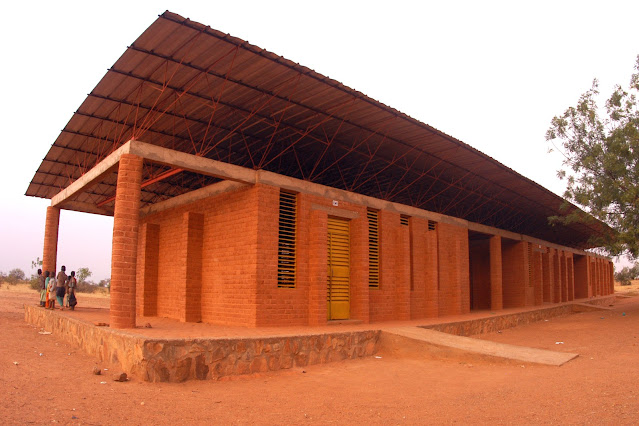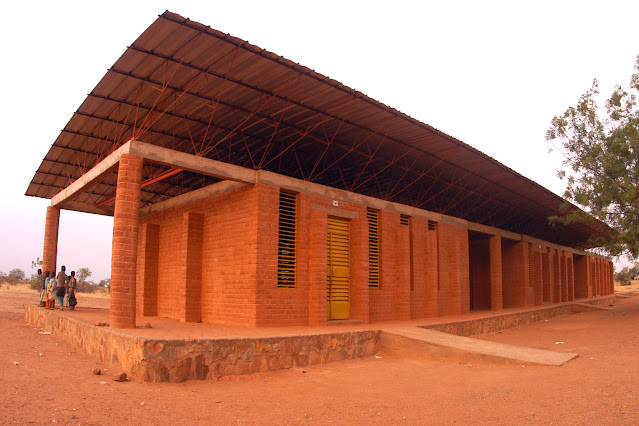Discover how smart home automation is revolutionizing sustainable living through energy efficiency, cost savings, and eco-friendly innovation. In a world where environmental awareness is essential, sustainability has evolved from a mere buzzword to a necessity. As global energy demands increase, it is crucial to find efficient and eco-friendly solutions for our homes. This is where smart home automation comes into play. It represents a powerful combination of technology and sustainability that is transforming how we live, consume, and conserve resources. From smart thermostats that reduce energy waste to water systems designed to prevent overuse, automation is enabling homeowners to make significant contributions to a greener planet.
OBJECTIVE
I've always perceived discussions around "sustainability" as heavily revolving around nature and the environment, often leading us to revisit traditional practices, fundamentals, and even heritage preservation. However, I've discovered that technology and innovation are vital components of sustainable living. They empower us to tackle critical issues like energy efficiency, water conservation, and carbon footprint reduction more effectively than ever before. In this blog, we will explore how these advancements are paving the way for a greener future. Join us on this inspiring journey toward a sustainable world!
1. Understanding Smart Home Automation
Smart home automation refers to using interconnected devices and systems that automatically manage functions such as lighting, temperature, security, and appliances. These devices are typically powered by the Internet of Things (IoT) — meaning they can communicate, learn user behavior, and optimize operations without constant manual control.
Some common examples include:
Smart thermostats that learn your schedule and adjust heating or cooling accordingly.
Automated lighting that dims when rooms are unoccupied.
Smart plugs and appliances that can be remotely controlled or scheduled.
What makes smart home automation so revolutionary is its ability to reduce energy and resource waste while improving comfort and convenience.
2. The Link Between Smart Homes and Sustainability
A truly sustainable home doesn’t just rely on eco-friendly materials or solar panels — it relies on efficiency. Smart home systems address sustainability in three primary ways:
a. Energy Efficiency
Traditional homes often waste energy through unnecessary lighting, heating, and cooling. Smart systems can monitor energy usage in real-time and make automatic adjustments.
For instance, a smart thermostat can reduce heating
when no one’s home or optimize cooling based on outdoor weather
patterns. This simple automation can cut energy bills by up to 20–30%
annually.
b. Resource Optimization
Beyond electricity, smart devices can manage water consumption and other household resources. Smart irrigation systems, for example, water your garden only when soil moisture levels drop below a certain threshold — preventing waste and saving hundreds of gallons of water yearly.
c. Reduced Carbon Footprint
By curbing excess energy and water use, smart homes contribute directly to lower greenhouse gas emissions. When paired with renewable energy systems like solar panels or wind turbines, the environmental impact is even more profound.
3. Smart Technologies That Drive Sustainable Living
Let’s explore some of the most impactful smart technologies making sustainability achievable in everyday living:
Smart Thermostats
Devices like Google Nest or Ecobee learn your daily habits and temperature preferences. They automatically adjust heating and cooling to minimize waste, often syncing with weather data to predict temperature shifts.
Smart Lighting Systems
Smart bulbs and lighting systems (like Philips Hue) adjust brightness based on natural light levels or occupancy. You can schedule them, use motion sensors, or even sync them with sunrise and sunset patterns — drastically cutting unnecessary energy use.
Smart Appliances
Modern refrigerators, dishwashers, and washing machines now come with “eco-modes” and Wi-Fi connectivity. These appliances can run during off-peak energy hours or send notifications when maintenance is needed, extending their lifespan and reducing energy demand.
Water Management Systems
From smart showerheads that track water usage to intelligent leak detection systems, water automation helps prevent waste. Smart irrigation systems use weather forecasts and soil sensors to water plants only when needed.
Renewable Energy Integration
Smart homes increasingly integrate solar panels, battery storage systems, and electric vehicle (EV) chargers. These systems not only generate clean power but also use AI to manage when and how energy is consumed, stored, or sold back to the grid.
4. Data-Driven Sustainability
One of the greatest strengths of smart home automation is data — and how it empowers users to make smarter decisions.
Real-Time Energy Analytics
Smart meters and dashboards provide detailed insights into your home’s energy patterns. You can track which appliances consume the most power, identify inefficiencies, and adjust behavior accordingly.
AI and Predictive Management
Advanced systems use AI and machine learning to predict future energy needs. For example, an AI-based thermostat might learn that you usually turn the heat up on cool mornings and do it automatically — but only when energy rates are lowest.
Community and Grid Benefits
When many smart homes share energy data, entire communities can optimize electricity distribution and reduce strain on the grid — paving the way for smarter, more sustainable cities.
5. Economic and Environmental Benefits
Smart home automation isn’t just eco-friendly — it’s economically smart too.
Lower Utility Bills
The U.S. Department of Energy estimates that smart thermostats alone can save homeowners about 10% annually on heating and cooling costs. Combine that with efficient lighting and appliances, and you’re looking at substantial long-term savings.
Government Incentives
Many governments and local utilities now offer rebates or tax credits for smart, energy-efficient devices and renewable integrations like solar panels or EV chargers.
Reduced Waste, Longer Lifespan
Smart monitoring ensures systems run only when necessary, extending the life of devices and reducing e-waste — another often-overlooked sustainability benefit.
6. Challenges and Considerations
While the benefits are clear, smart home sustainability isn’t without challenges.
Upfront Costs
Smart systems can have higher initial costs compared to traditional setups. However, the return on investment (ROI) often becomes evident within a few years due to lower utility bills.
Privacy and Data Security
Because smart homes rely on connectivity, data security is a legitimate concern. Homeowners must ensure their devices use encrypted communication and secure Wi-Fi networks.
Compatibility
With so many smart devices and platforms available, ensuring compatibility between different brands and ecosystems (like Google Home, Apple HomeKit, or Alexa) can be tricky — though industry standards are improving.
7. The Future of Smart and Sustainable Living
Looking ahead, the connection between smart technology and sustainability will only deepen.
AI-Powered Homes: Next-generation homes will self-optimize — learning from years of data to minimize consumption automatically.
Smart Cities: Imagine neighborhoods that communicate with local power grids to share surplus energy.
Accessible Tech: As costs decrease, smart sustainable living will become attainable for a broader audience, not just luxury homeowners.
Ultimately, smart automation is shaping the future of environmental responsibility — not through sacrifice, but through intelligent innovation.
8. Practical Tips for Homeowners
If you’re ready to make your home smarter and greener, here’s where to start:
Start Small: Begin with smart bulbs or plugs to monitor energy use.
Invest in a Smart Thermostat: It’s one of the most effective sustainability upgrades.
Use Energy Monitoring Apps: Tools like Sense or EnergyHub help track consumption.
Leverage Automation Routines: Set “away” or “sleep” modes to conserve energy automatically.
Integrate Renewables: Consider solar power or EV charging when budget allows.
Each small step compounds into major savings and a smaller carbon footprint.
FINAL THOUGHTS
Smart home automation is not just a luxury; it is a vital step toward sustainable living. By efficiently managing energy, water, and other resources, these systems empower homeowners to enjoy comfort while actively reducing their environmental footprint. As technology progresses, the potential for sustainability resonates within our own homes. From smart thermostats that optimize heating and cooling to solar integration that harnesses natural energy, every connected device plays a crucial role in building a greener and more efficient world. In conclusion, smart homes represent more than just a trend — they are the foundation for a sustainable future. Embracing this technology is not just beneficial; it is essential for a healthier planet.
Architect, Sustainable Architecture
Link in account for architectural works.
REFERENCES AND FURTHER READINGS:
Arasid, W., Zakaria, D., & Ubad Abdullah, C. “An IoT-based smart home prototype: Enhancing energy efficiency, water conservation, and sustainability education.” Journal of Environment and Sustainability Education, v3 i3. DOI: 10.62672/joease.v3i3.148.
https://joease.id/index.php/joease/article/view/148
Ubarhande, K., & Vanarse, S. (2024). “GREEN IoT for Smart Homes: Reducing Energy Consumption and Enhancing Sustainability.” ShodhKosh: Journal of Visual & Performing Arts, Vol. 5 Issue 6, 3129-3138. DOI: 10.29121/shodhkosh.v5.i6.2024.3640.
https://www.granthaalayahpublication.org/Arts-Journal/ShodhKosh/article/view/3640
Hendron, R., Heinemeier, K., German, A., & Pereira, J. (2021). “Modeling Savings for ENERGY STAR Smart Home Energy Management Systems (Technical Report).” OSTI.gov. DOI: 10.2172/1807789.
https://www.osti.gov/biblio/1807789
Parker, D., Sutherland, K., & Chasar, D. “Evaluation of the Space Heating and Cooling Energy Savings of Smart Thermostats in a Hot-Humid Climate Using Long-Term Data.” FSEC RR-647-16, 2016.
https://stars.library.ucf.edu/fsec/113/
ENERGY STAR. “Smart Thermostats – Smart Thermostats | ENERGY STAR Home Upgrade.” U.S. EPA ENERGY STAR program.
https://www.energystar.gov/products/energy_star_home_upgrade/smart_thermostats
Kumar, M. & Pandey, K. M. “The Impact of IoT on Smart Home Energy Management.” International Journal of Soft Computing and Engineering (IJSCE), Vol. 13 No. 5 (2023). DOI: 10.35940/ijsce.D3647.13051123.
https://journals.blueeyesintelligence.org/index.php/ijsce/article/view/506
“Future of Energy Management Models in Smart Homes: A Systematic Literature Review of Research Trends, Gaps, and Future Directions.” Process Integration and Optimization for Sustainability, Vol. 9, 2025.
https://link.springer.com/article/10.1007/s41660-025-00506-x
PHOTO ATTRIBUTION:
All photos used are royalty-free courtesy of Pixabay.com



















